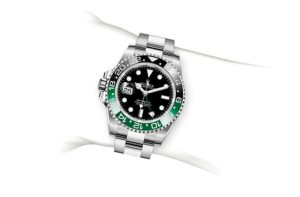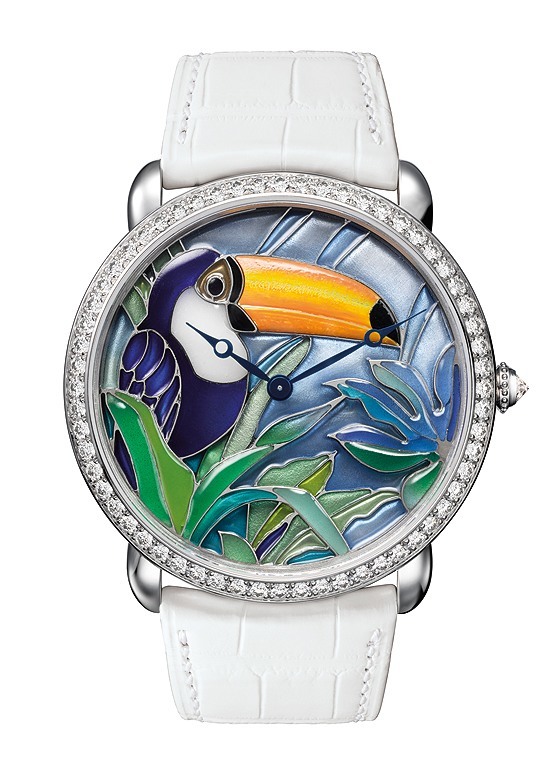
In its Maison des Métiers d’Art in La Chaux-de-Fonds, Switzerland, Cartier creates artisanal dials for manufacture watches. WatchTime was among a group who were the first visitors to the facility. In this feature from the WatchTime archives, we offer an inside look.
The field next to Cartier’s giant, ultra-modern, glass-walled watch manufacturing facility in La Chaux-de-Fonds was, until recently − and for hundreds of years before − a farm. On it to this day stands a Bernese-style, four-story farmhouse, built in 1872. A few years ago, Cartier acquired the field and the farmhouse. Now the house has been transformed into a center for artisans whose crafts are used to produce Cartier watches, particularly watch dials.
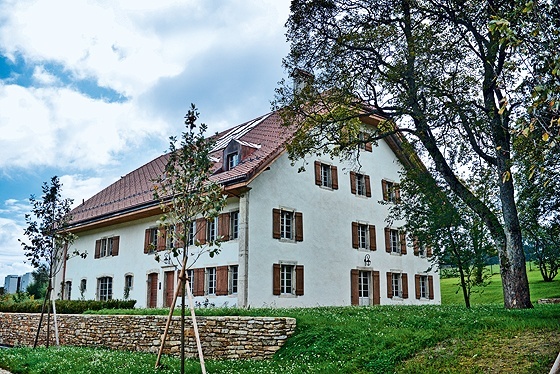
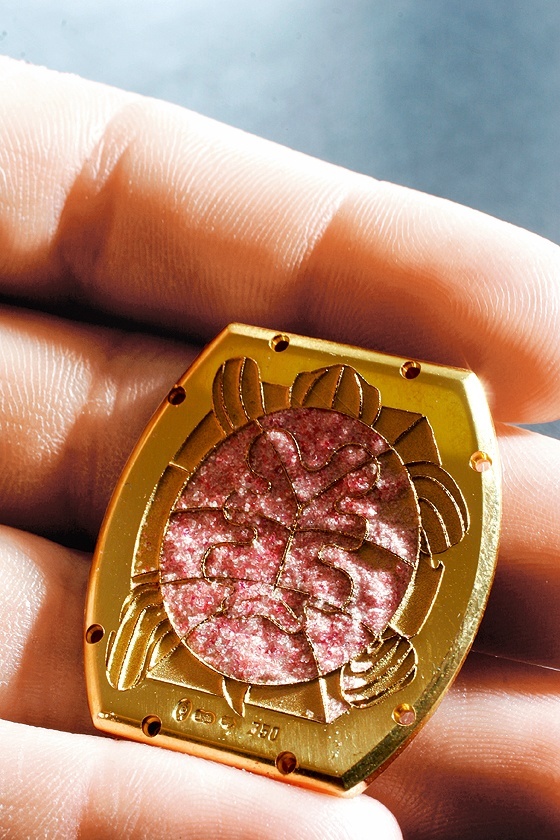
Called the Maison des Métiers d’Art, the facility opened last fall after a three-year restoration of the farmhouse. It houses 28 craftspeople who work on two floors in an unusual open-space plan designed to encourage exchanges of information between the artisans. On the second floor are the jewelry crafts (gem-setting, jewelry making, polishing, granulation, and filigree work). On the third floor are the crafts of enameling (six different kinds), a traditional craft used in dial making; as well as newer, more exotic ones like marquetry (using wood and straw) and stone mosaic. There are meeting rooms on the first floor; on the sloped-roof fourth floor is a mezzanine for meetings and exhibitions. “The snug atmosphere of the Maison des Métiers d’Art evokes a beehive,” Cartier says, “with periods of great concentration, exchanges about traditional techniques and the development of specific tools. This is how forgotten expertise is rediscovered and the craftspersons work hard to understand its secrets and further develop it.” The new workshop is part of a growing trend to emphasize the artistic side of fine watchmaking, using both traditional and unusual crafts to create products that combine high art and high horology. Scroll down to see photos.

Here are examples of Cartier watches with complex, intricate manufacture dials that are now produced in the new Maison.
Rotonde de Cartier 42-mm watch, Panther
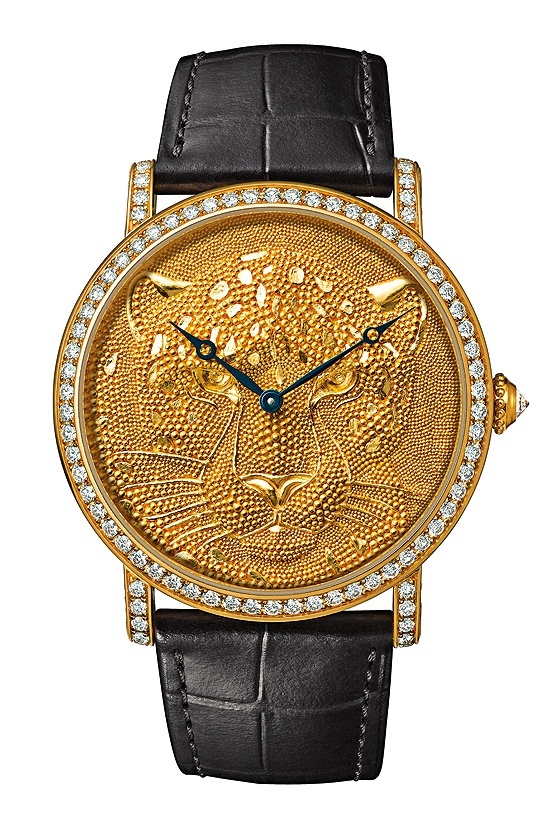
The face of the panther on the dial of this watch, introduced in 2013, is made of 22-karat yellow gold. Cartier creates the panther using the granulation technique, which Cartier says is like “sowing seeds of gold.” Cartier makes gold beads using wires that are cut up, rolled in charcoal dust and heated with a flame. The beads are then assembled one by one and fused with the gold sheet to create the relief of the panther face. The panther is made up of nearly 3,800 gold beads, attached to the dial in groups of five. It took about 320 hours to attach the beads. Some 3,500 firings were required to complete the picture. This limited-edition watch (20 pieces) comes in an 18k-gold case with brilliant-cut diamonds. Inside is Caliber 9601 MC, a manual-wind manufacture movement.
Ronde Louis Cartier 42-mm watch, Two Panthers
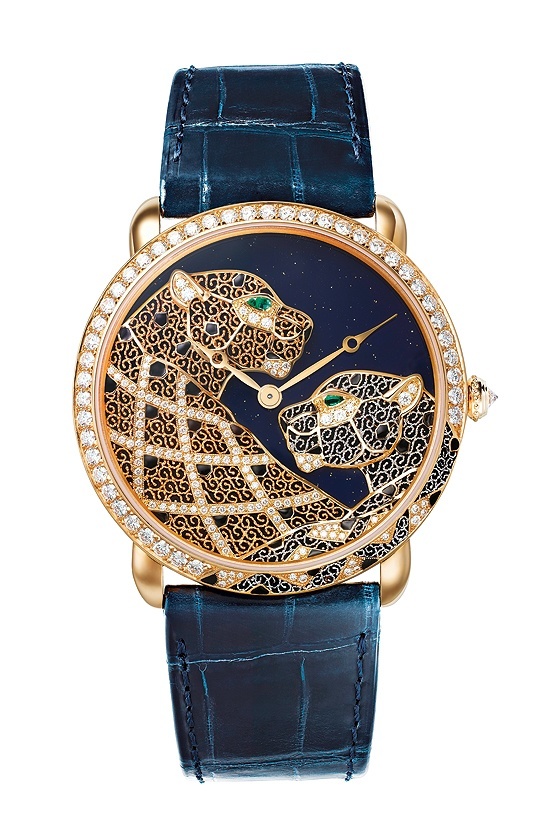
The two panthers on the dial of this new watch are produced by filigree work with the application of lacquer and with gem-setting. The filigree technique uses 22k-yellow-gold wire and 950-platinum wire, which are twisted and flattened by a hammer. The wire is then shaped to form the panthers and then soldered. The filigree work for this dial took 10 days to complete. The panthers’ eyes are emeralds. The watch is a limited edition of 20 pieces. The 18k-gold case is set with brilliant-cut diamonds. Inside is a manufacture movement, manual-wound Caliber 430 MC.
Ronde Louis Cartier 42-mm watch, toucan

The toucan on the dial of this watch, introduced last year, is created by the technique of plique-à-jour enamel. The toucan is traced using a thread of soldered gold, with a layer of silver or copper placed across the bottom of each cavity formed. Then comes the enamel work. Enamel in its raw state is a combination of silica, alkaline components and lead, similar to lead crystal. These are melted at a high temperature and then ground into a colorless powder called flux. By adding metallic oxides, the craftsman creates a wide range of color tones. Once placed on the metal, the enamel powder undergoes several successive firings at temperatures exceeding 800 degrees C. Each color has its own firing constraints. The dial of this watch has 21 different enamel colors. When the enamel work is completed, the bottom surface dissolves. The translucent enamel is held in place by the extremely thin gold partitions. The watch is a limited edition of 40 pieces. Its case is made of white gold with a rhodium finish and set with brilliant-cut diamonds. The manufacture movement is Caliber 430 MC.
Rotonde de Cartier 42-mm watch, tiger
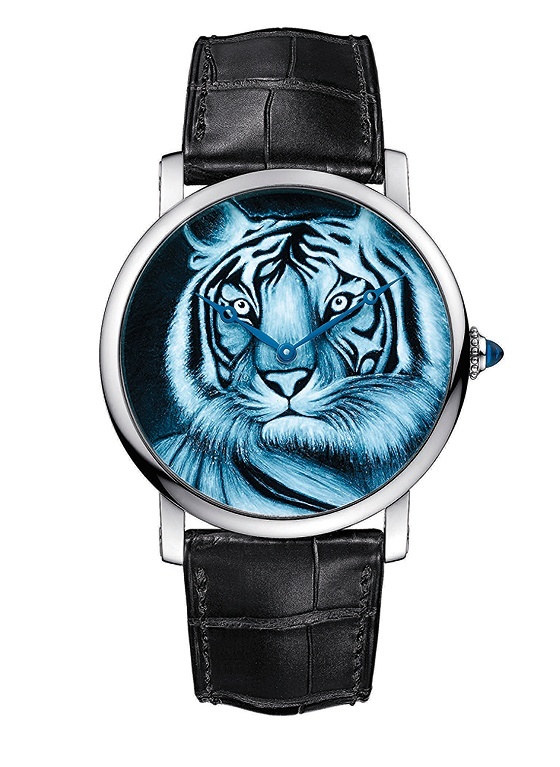
The tiger on the dial of this watch is created using the grisaille enamel technique. The base of the 18k-white-gold dial is covered with a layer of black enamel, which is fired. Then Limoges white enamel is applied with a needle or thin brush. With the white enamel, the craftsman produces different color tones to create the tiger. It takes more than 40 hours of work to create this dial. Cartier will produce 100 pieces of this watch. It has a white-gold case and a manual-wound manufacture movement, Caliber 9601 MC.




